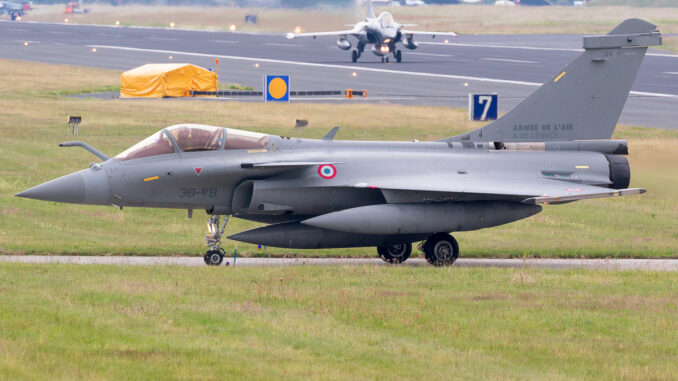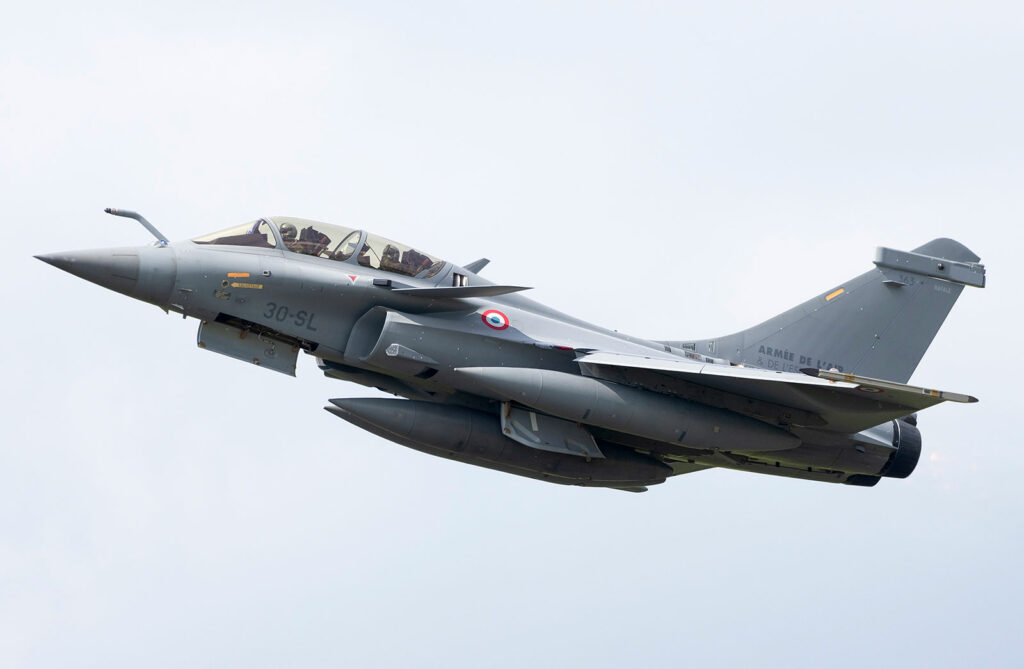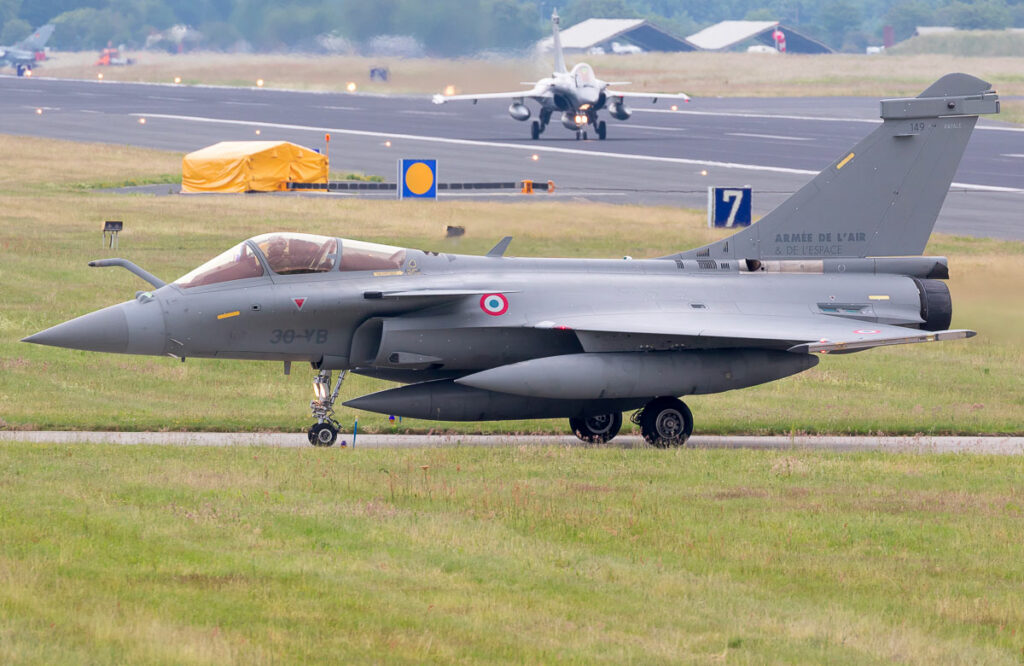
In November, the French Air Force tested the Agile Combat Employment concept with Rafales, demonstrating increased flexibility under NATO command.
The French Air Force deployed Rafale fighters in Germany and Croatia as part of the Agile Combat Employment (ACE) concept. This strategy aims to disperse air forces over several locations to ensure their resilience and effectiveness in the event of a threat. In collaboration with NATO allies, this initiative has tested capabilities such as refueling, rearming and mission planning from remote bases. This deployment marks a step forward in air force coordination within the Atlantic Alliance.

Rafale deployment: a demonstration of tactical flexibility
In early November, the French Air Force deployed three Rafales from the Saint-Dizier air base to Spangdahlem, Germany. This base, operated by the US 52nd Fighter Wing with F-16s, provided logistical support infrastructure for the French aircraft, including refueling, rearming and mission planning. Another detachment went to Zagreb, Croatia, to work with the Croatian armed forces.
These temporary deployments enabled French forces to integrate fully into the NATO chain of command, temporarily transferring their authority. In one week, Rafales took part in joint exercises with Romanian F-16s, Spanish F-18s and the MAMBA SAMPT ground-air defense system, demonstrating the interoperability of allied forces.
Key figures:
- The Rafales covered some 1,000 km** to reach Germany and Croatia.
- Each Rafale can be refueled in less than 20 minutes, maximizing their operational readiness.
Agile Combat Employment: a concept for operational resilience
The Agile Combat Employment (ACE) concept, adopted by NATO, aims to disperse air forces to improve their survivability and operational resilience. This approach enables air power to be projected from main bases or deployed sites, and to respond rapidly to potential threats.
ACE is based on modular infrastructures and plug-and-play operation, facilitating rapid integration of allied capabilities. This scheme also enhances the adaptability of pilots and technical teams, by training them to operate in a variety of environments. For example, the French teams tested scenarios involving limited resources, such as short runways or reduced logistical capabilities.
Practical example:
During the exercise, the Rafales integrated American mission planning protocols and used standardized refueling infrastructures. These tests confirmed their compatibility with allied bases in the event of emergency deployment.
Strategic implications for France and NATO
The implementation of the ACE concept will reinforce the military credibility of French and NATO forces. By demonstrating their ability to operate from geographically dispersed sites, the Allies can be sure of being able to maintain their operations even in the event of major disruptions.
Economic impact:
The average cost of an exercise of this type, including logistics and fuel, is estimated at 500,000 euros. However, this expenditure is considered a strategic investment to guarantee the continuity of military operations.
Geopolitical consequences:
- Reinforcement of deterrence**: ACE shows potential adversaries that NATO forces can adapt quickly.
- Increased collaboration**: These exercises promote Allied unity, strengthening their ability to respond collectively to threats.

Perspectives on Agile Combat Employment
ACE represents a major evolution in modern air force management. As asymmetric threats and high-intensity conflicts increase, the ability to effectively disperse and coordinate forces is becoming a strategic imperative. By adopting this concept, France is positioning itself as a key player in the modernization of NATO’s capabilities.
In the next stages, NATO plans to generalize the use of ACE in its operational plans, with further investment in modular infrastructure and standardized equipment. By strengthening these capabilities, the Alliance is ensuring that it can respond effectively to the challenges of tomorrow.
War Wings Daily is an independant magazine.